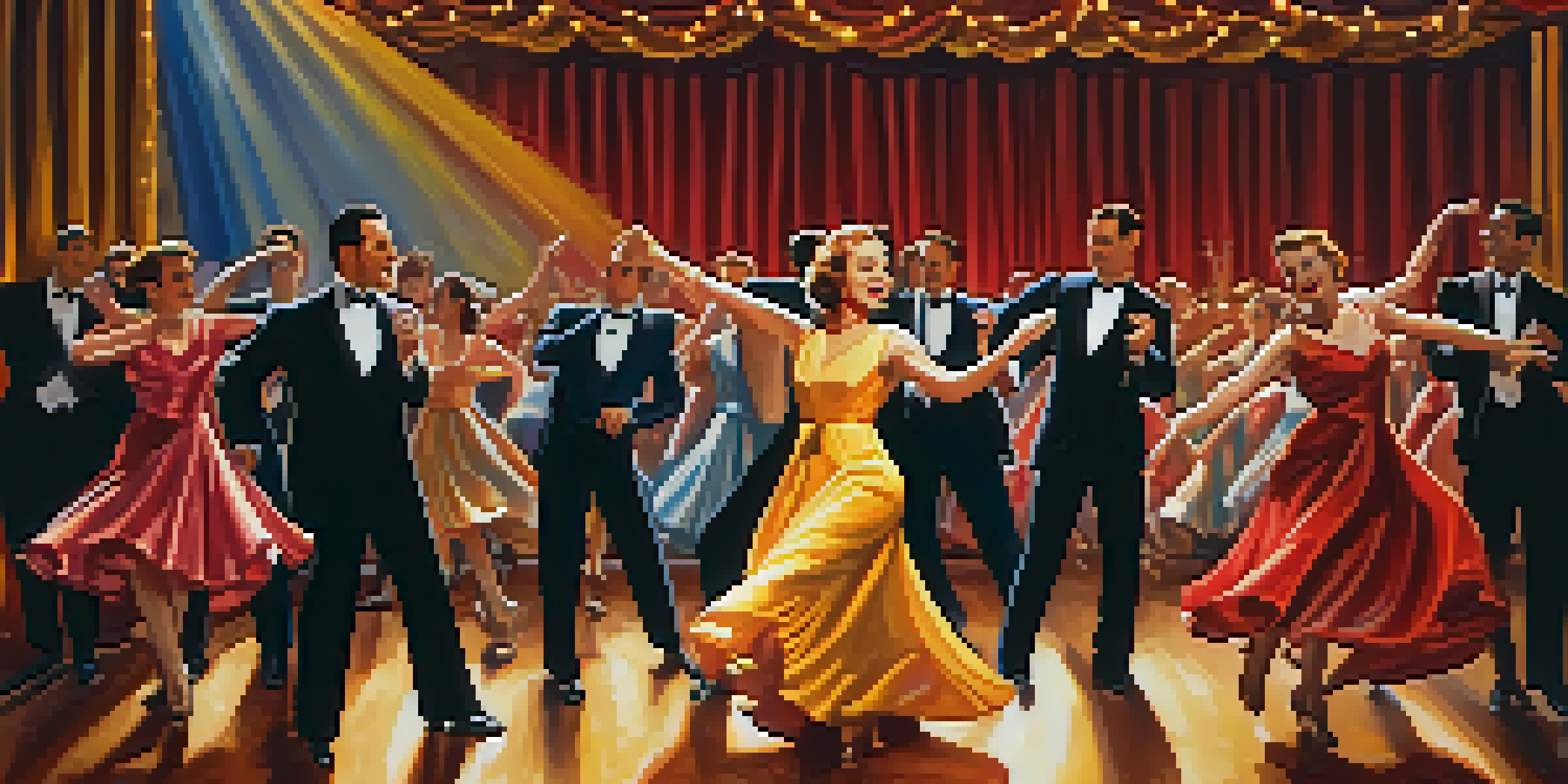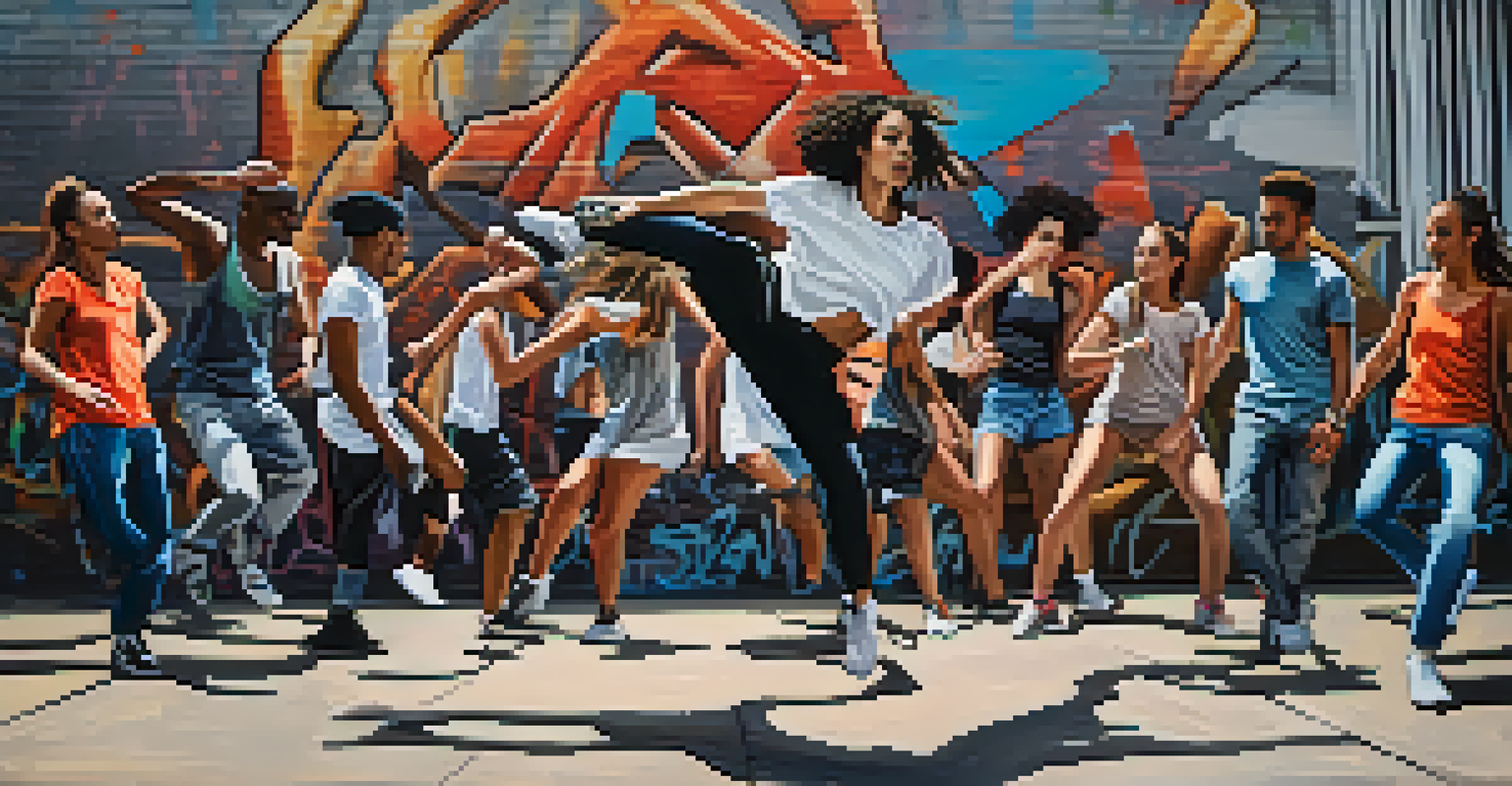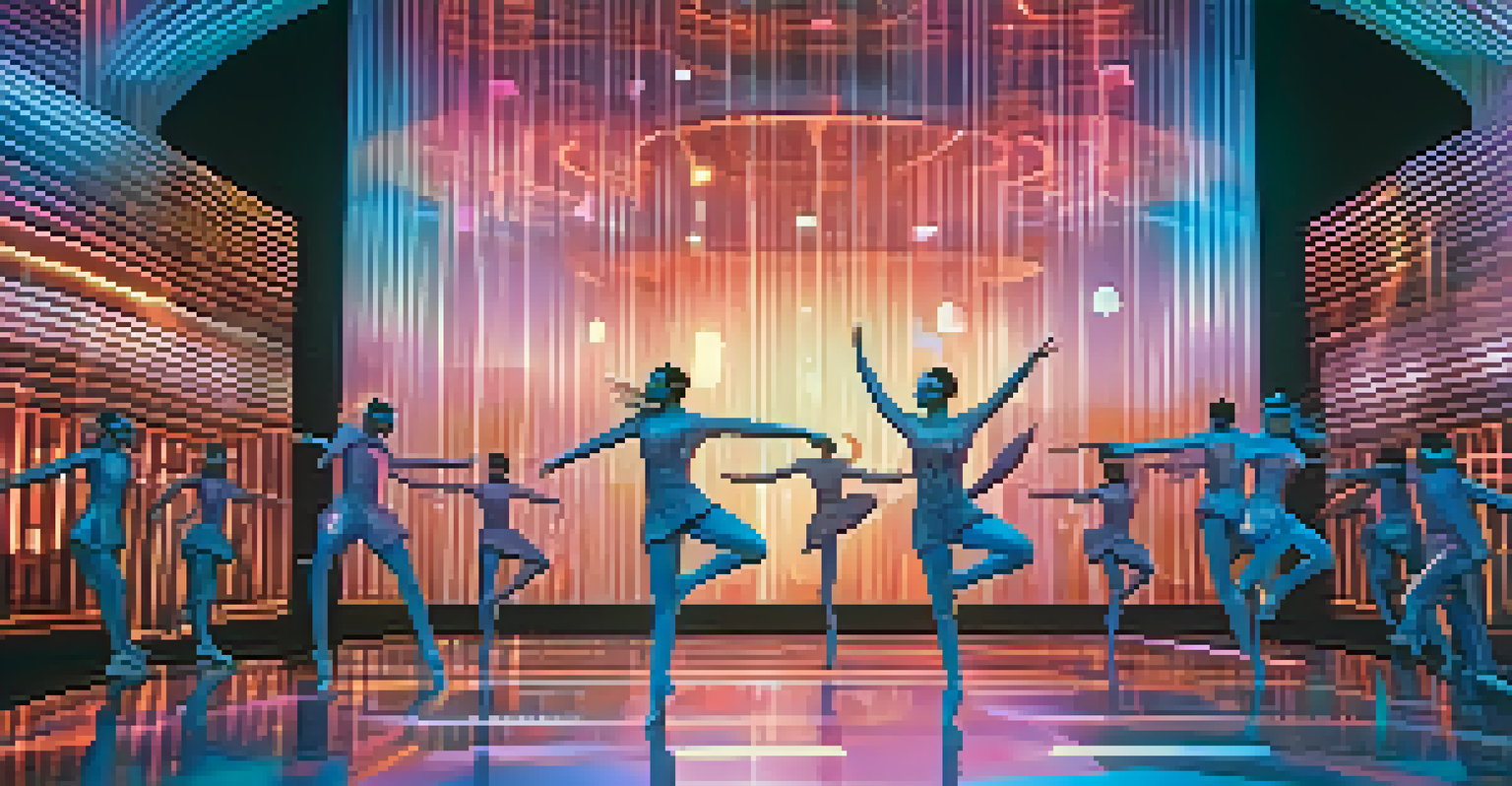The Evolution of Cinematic Dance: From Classic to Modern Films

The Origins of Dance in Early Cinema
Dance has been part of storytelling since ancient times, and early cinema embraced this art form as it emerged in the late 19th century. Silent films often featured dance as a means of expression, captivating audiences with physical storytelling. Think of the iconic scenes in films like 'The Birth of a Nation' where dance sequences helped convey emotion without dialogue.
Dance is the hidden language of the soul.
These early cinematic performances were heavily influenced by theater, where dance was a key component. The lack of sound meant that physicality was paramount, and dancers had to convey their emotions through movement alone. This era laid the groundwork for the integration of dance into film narratives, showing audiences the power of movement in storytelling.
As filmmakers began to explore the medium, dance evolved, becoming a vital part of the cinematic experience. The combination of visuals and choreography started to create a more immersive form of entertainment, setting the stage for future innovations in dance on screen.
The Golden Age of Musicals and Dance
The 1930s to the 1960s is often referred to as the Golden Age of Musicals, a time when dance took center stage in cinema. Films like 'Singin' in the Rain' and 'West Side Story' showcased elaborate dance numbers that were both visually stunning and integral to the plot. This period highlighted the collaboration between choreographers and filmmakers, elevating dance to an art form within cinema.

Stars like Fred Astaire and Ginger Rogers became household names, their signature dance styles captivating audiences around the world. Their performances were a blend of elegance and athleticism, leaving viewers in awe and setting a high standard for future generations. This era proved that dance could not only entertain but also convey complex emotions and themes.
Dance as a Narrative Tool
Dance enhances storytelling in film by conveying emotions and themes that might be difficult to express through dialogue.
As musicals gained popularity, choreographed dance sequences became a staple in filmmaking, pushing boundaries and experimenting with styles. The influence of Broadway continued to shape the cinematic landscape, merging theatricality with film to create unforgettable moments that still resonate today.
The Rise of Contemporary Dance in Film
As we moved into the late 20th century, the landscape of dance in film began to shift dramatically. Contemporary dance styles emerged, reflecting cultural changes and new artistic expressions. Films like 'Flashdance' and 'Save the Last Dance' introduced audiences to a more urban, gritty side of dance, showcasing the raw energy of street styles and modern choreography.
To watch us dance is to hear our hearts speak.
This evolution was not just about the dance itself, but also how it resonated with the youth and their experiences. Dance became a form of rebellion, self-expression, and identity, resonating deeply with audiences. The fusion of different dance styles in these films highlighted diversity and inclusivity, breaking away from the traditional norms established in earlier cinema.
The incorporation of contemporary dance into mainstream films opened up new avenues for storytelling, allowing filmmakers to explore themes of love, aspiration, and struggle through movement. As audiences embraced these narratives, the role of dance in cinema became more significant than ever.
Influence of Technology on Dance in Cinema
With the advent of advanced technology, the way dance is captured and presented on screen has transformed immensely. From CGI enhancements to innovative cinematography techniques, filmmakers now have tools that allow them to create mesmerizing dance sequences. Movies like 'La La Land' and 'The Greatest Showman' demonstrate how technology can elevate dance performances to new heights.
The use of digital effects can enhance the visual experience, allowing for breathtaking visuals that were once impossible to achieve. Choreographers and directors can experiment with perspectives and angles, creating dynamic scenes that captivate viewers. This blending of technology and dance has opened doors for creative experimentation, pushing the boundaries of what is possible in film.
Globalization Enriches Dance
The integration of diverse dance styles from around the world in cinema promotes cultural appreciation and inclusivity.
Moreover, technology has made dance more accessible, with platforms like social media allowing dancers to share their performances globally. This accessibility has fostered a new generation of dancers and filmmakers who continue to innovate and inspire, ensuring that the evolution of cinematic dance remains vibrant and relevant.
The Role of Dance in Storytelling
Dance in cinema goes beyond just entertainment; it serves as a powerful narrative tool that enhances storytelling. Through movement, filmmakers can convey emotions and themes that might be difficult to express through dialogue alone. For instance, in 'Black Swan,' dance becomes a metaphor for the protagonist's inner turmoil and transformation, adding layers to the narrative.
Choreography often reflects character development, helping audiences connect with the story on a deeper level. Whether it's the joy of a celebratory dance or the tension in a confrontational routine, dance can evoke strong emotional responses. This ability to communicate without words makes it an essential element in film storytelling.
As filmmakers continue to explore the intersection of dance and narrative, we can expect to see even more innovative approaches that challenge traditional storytelling techniques. By blending dance with narrative, the possibilities for engaging and impactful cinema are endless.
The Globalization of Dance in Film
In today's interconnected world, the globalization of dance has significantly influenced the film industry. Diverse dance styles from around the globe are now being integrated into mainstream cinema, reflecting cultural richness and variety. Films like 'Slumdog Millionaire' and 'Crazy Rich Asians' showcase dance forms from different cultures, promoting inclusivity and appreciation for global artistry.
This fusion of cultural dance styles not only enriches the visual experience but also educates audiences about different traditions and practices. By embracing global influences, filmmakers create a more authentic representation of contemporary society, bridging gaps between cultures. Dance becomes a universal language that speaks to shared human experiences, regardless of background.
Future Innovations in Dance Film
Emerging technologies and a focus on representation will drive the evolution of dance in cinema, creating new forms of engagement.
The rise of international cinema has also introduced audiences to talented dancers and choreographers from diverse backgrounds, further enriching the cinematic landscape. As we continue to see this trend, the evolution of dance in film will undoubtedly reflect the beautiful tapestry of global cultures.
The Future of Cinematic Dance
Looking ahead, the future of dance in cinema is bright, with endless possibilities for innovation and creativity. As new technologies emerge, filmmakers will continue to explore unique ways to integrate dance into storytelling. Virtual reality and immersive experiences may redefine how we experience dance on screen, allowing audiences to engage with performances like never before.
Furthermore, the ongoing dialogue around representation and diversity in the film industry will likely lead to more inclusive portrayals of dance. As filmmakers strive to tell authentic stories that resonate with audiences, the role of dance will continue to evolve, reflecting the complexities of modern society.

Ultimately, the evolution of cinematic dance is a testament to the enduring power of movement in storytelling. As we embrace the future, one thing is certain: dance will remain an integral part of the cinematic experience, captivating audiences and inspiring generations to come.